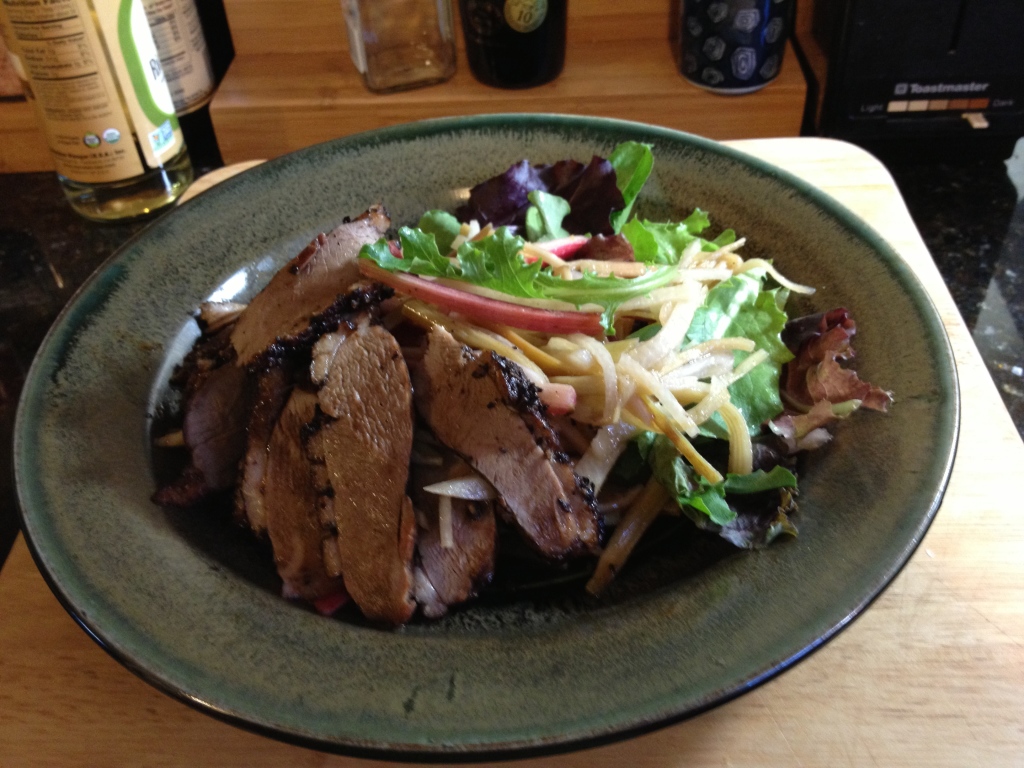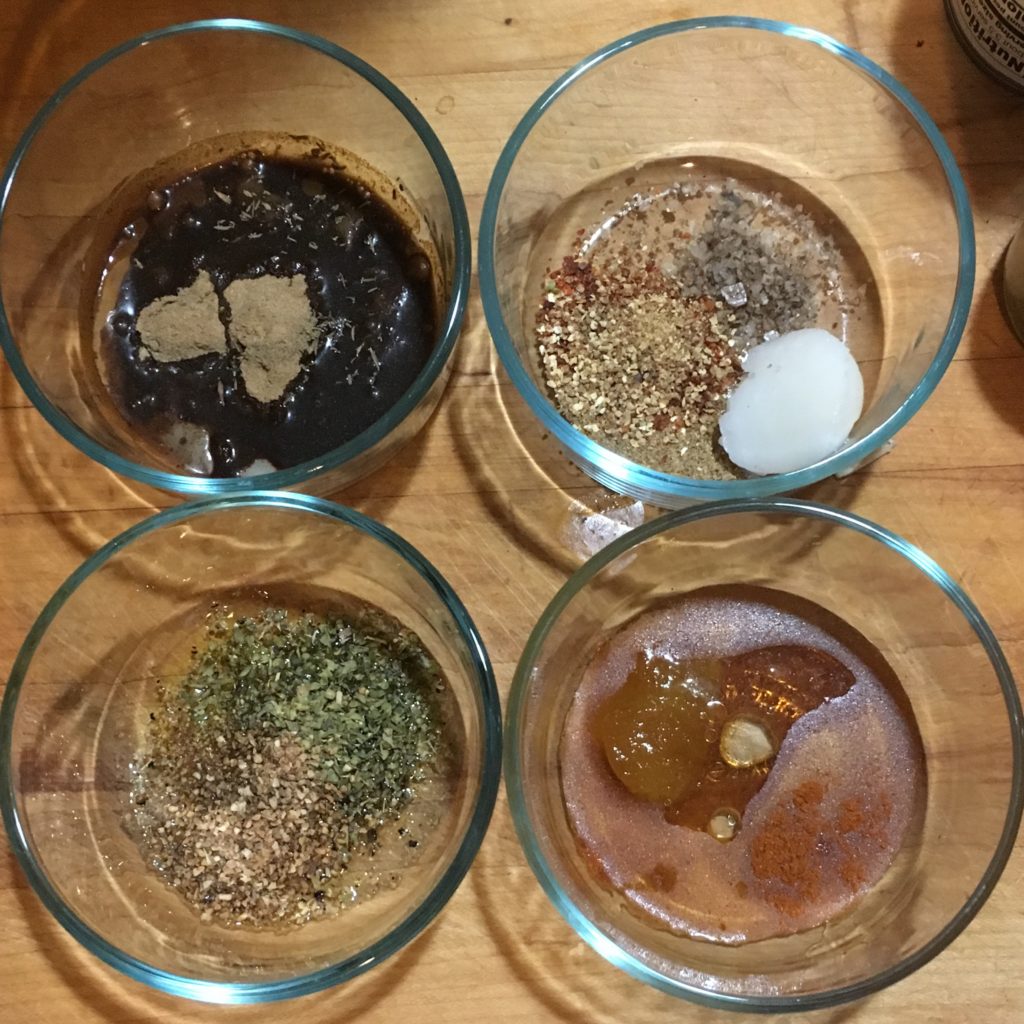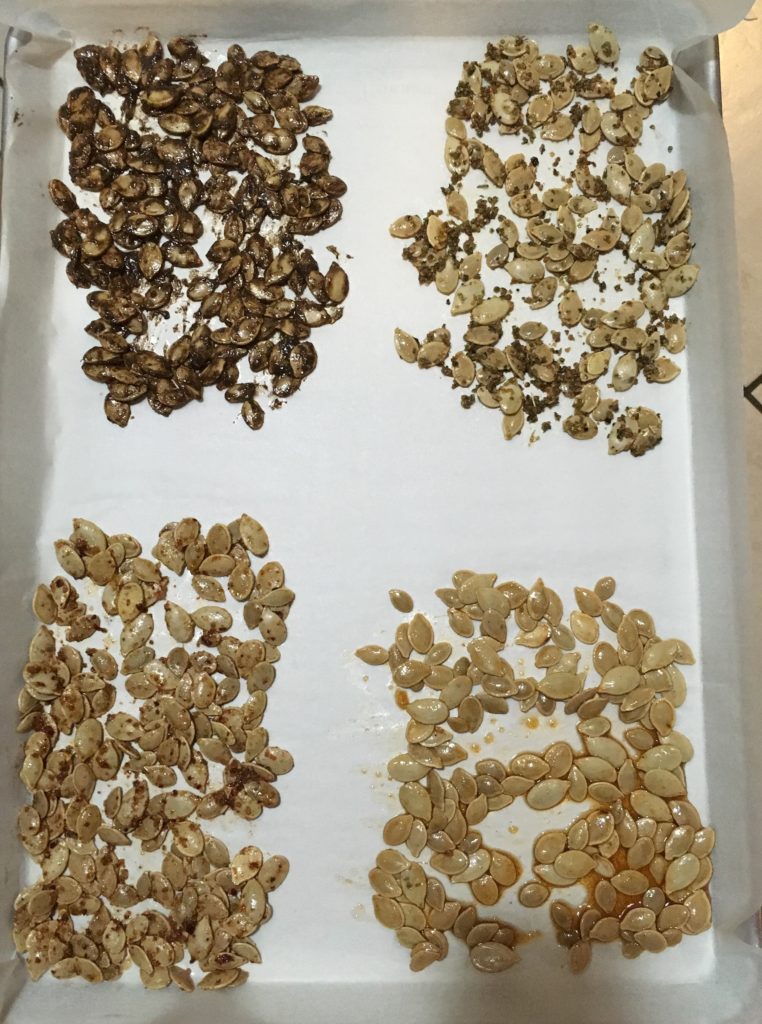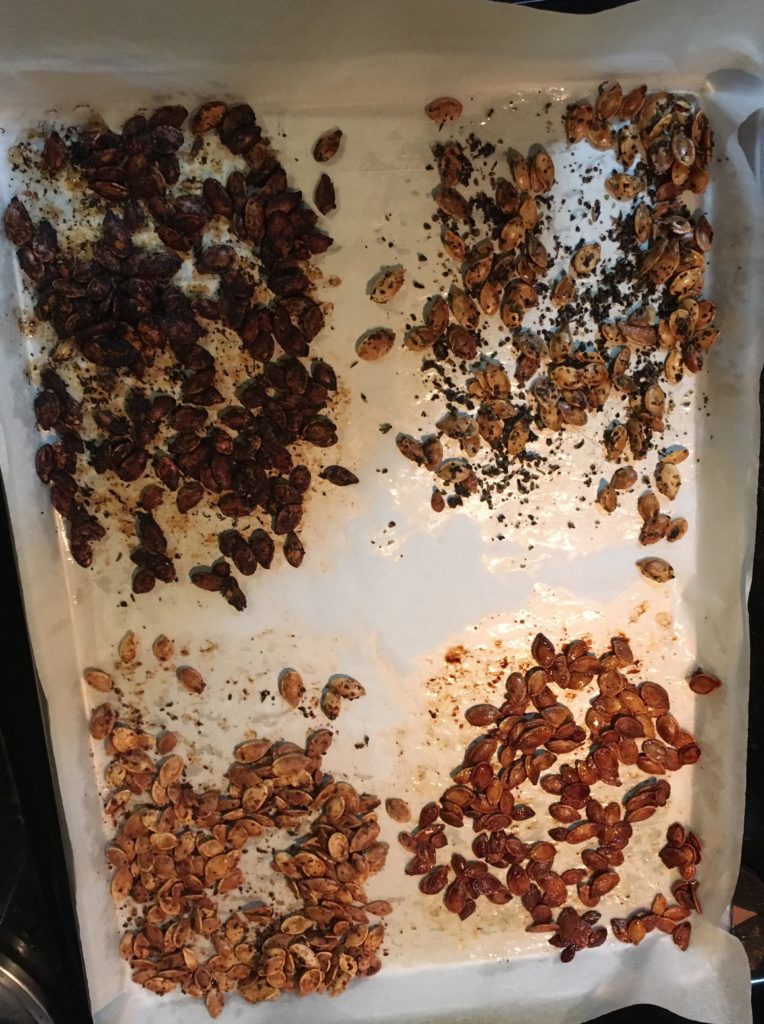In 2013 I invented a new thing: Rhubarb-Jicama Slaw. The “recipe” is buried inside a long narrative about duck confit and jicama fries, but then when rhubarb season comes around again I always want to give people this recipe by itself. (Because while it’s fantastic with duck, some people just have a ton of rhubarb to use up.)
Ingredients
- 3/4-1lb of fresh rhubarb, scrubbed, ends trimmed, peeled if necessary (When I wrote this recipe it was a pound to start with but quite fibrous so I had to peel it fairly deeply, hence 3/4 lb.)
- 1/3 cup of rice vinegar (naturally brewed, NOT “seasoned” which has sugar in it)
- 1/3 cup of cider vinegar
- 1/3 cup agave nectar or honey
- 1/4 tsp cinnamon
- 1/4 tsp Szechuan peppercorns
- 1/2 tsp dried orange peel
- 1 cucumber
- 1/2 of a large jicama (or a whole small jicama, which might be better; the big ones are more likely to be starchy)
- 4 lobes of shallot (that’s usually 2 fresh shallots, but I got the peeled kind which are already in individual lobes—I’ll julienne things all day with a song in my heart, but peeling shallots makes me grumble.)
- 3 T grapeseed oil (or other neutral/not-noticeably-flavorsome oil)
- 1 tsp toasted sesame oil
- 2 tsp soy sauce
- 1/2 tsp hot mustard powder (Chinese or Coleman’s would both be fine; I ran out of Coleman’s and bought some Chinese mustard at Penzey’s. They are very similar.)
Method
This is all about the julienne, but there’s stove work as well. This took about an hour, from picking up the knife to taking the first bite. You could use a food processor for some of it, or a mandolin if you’re not terrified of them.
- Make brine: In a small saucepan, combine the vinegar, agave/honey, peppercorns, cinnamon, and orange peel; set over medium-low heat while you julienne things.
- Julienne rhubarb. Notice that rhubarb feels amazing under the knife, like smooth-grained wood, as though julienned is all it ever wanted to be and it can’t believe we’ve all been cutting across the grain instead of along it this entire time. Put half of the rhubarb in a 2-cup Pyrex measuring cup or other heat-safe container (it’ll be about two cups, not packed). Reserve the remaining half (which you aren’t going to pickle).
- Make quick pickle: Jack up the heat under the brine so it boils. Let it boil for maybe 30 seconds and then pour it over the rhubarb in the heat-safe container. Set that aside (on the counter, not in the fridge).
- Deal with jicama: Peel and slice the jicama into thin planks. Taste a piece. If it’s starchy, you’ll need to blanch it. (Sometimes jicama is juicy and sweet—if it’s like that, go with it and skip the blanching part). Rinse out the saucepan you used for brine (or maybe a larger saucepan; use your own judgment) and fill it with fresh water; put that over high heat and keep an eye on it. Go ahead and finish julienning the jicama.
- Cucumber time: Peel the cucumber, split it lengthwise, and scoop out the seeds with a spoon. Split it across so you have quarters; do your best to julienne them. (There’s no shame here. They are slippery and treacherous.)
- Back to the jicama: If your jicama needed blanching, now’s probably the time: When your water is boiling, put the julienned jicama in it. Count to thirty. Drain the jicama into a colander and rinse it very well with cold water. Set the colander on a plate and put it in the fridge.
- Shallots: Peel them (unless you were lucky enough to find pre-peeled ones). Cut them very thinly lengthwise. You can’t really julienne them because they are too curvy.
- Mix things up: Combine your raw vegetables (not the pickle yet): In a large bowl, combine cucumber, jicama, shallot, and raw rhubarb.
- Weird existential pause: (Normally at this point I switch gears and cook the protein. The pickling-rhubarb needs at least another half-hour in the brine.)
- Pickled rhubarb: Scoop the rhubarb out of the pickling brine (don’t toss the brine!). Add the pickled rhubarb to the big slaw bowl.
- Make dressing: In a bowl you like to whisk things in, put 1/4c of the brine and whisk in the mustard powder and the soy sauce* and then the grapeseed and sesame oils in as thin a stream as you have patience for, whisking thoroughly. (Now you can discard the rest of the brine, or save it for another round of pickling, or use it in a shrub, or whatever.) *Originally I had the soy sauce in the brine, but that makes the leftover brine less versatile.
- Dress your slaw: Just before serving**, whisk the dressing to recombine. Pour the dressing over the slaw and toss gently but thoroughly. Taste for seasoning and add more soy sauce or Szechuan pepper or maybe a little lime juice or fish sauce if you like. (**You could do this a little bit ahead of time, but not too long or the dressing pulls water out of the vegetables and makes things a little less spectacular though more harmonious—it’s still good the next day, but different.)




